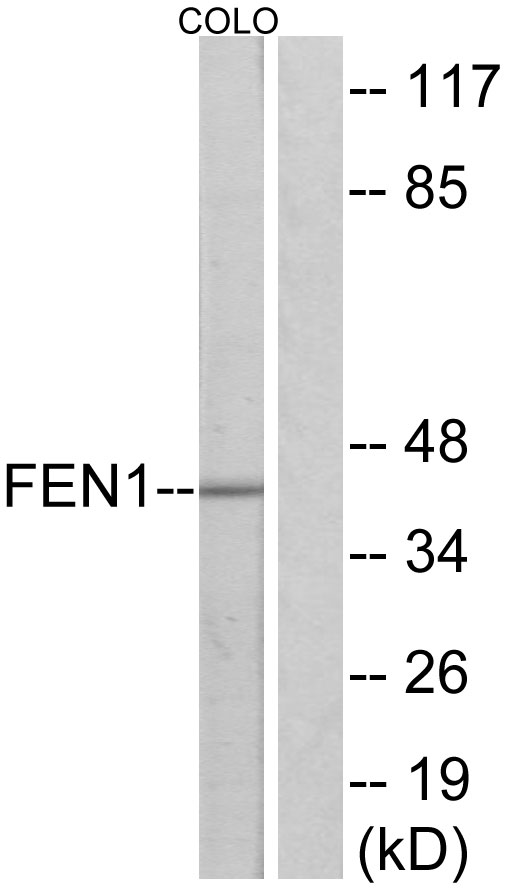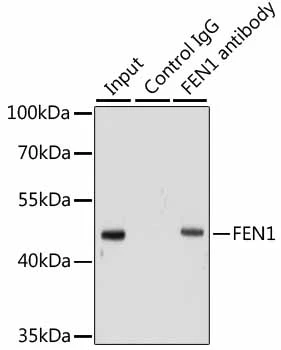![ICC/IF analysis of 4% PFA-fixed HeLa cells using GTX66841 FEN1 antibody [7H8]. Dilution : 1:400 ICC/IF analysis of 4% PFA-fixed HeLa cells using GTX66841 FEN1 antibody [7H8]. Dilution : 1:400](https://www.genetex.com/upload/website/prouct_img/normal/GTX66841/GTX66841_20190305_ICCIF_w_23061221_171.webp)
ICC/IF analysis of 4% PFA-fixed HeLa cells using GTX66841 FEN1 antibody [7H8]. Dilution : 1:400
FEN1 antibody [7H8]
GTX66841
ApplicationsImmunoFluorescence, Western Blot, ImmunoCytoChemistry
Product group Antibodies
ReactivityHamster, Human, Monkey, Mouse, Rat
TargetFEN1
Overview
- SupplierGeneTex
- Product NameFEN1 antibody [7H8]
- Delivery Days Customer9
- Application Supplier NoteWB: 1:1000. ICC/IF: 1:1000-500. *Optimal dilutions/concentrations should be determined by the researcher.Not tested in other applications.
- ApplicationsImmunoFluorescence, Western Blot, ImmunoCytoChemistry
- CertificationResearch Use Only
- ClonalityMonoclonal
- Clone ID7H8
- ConjugateUnconjugated
- Gene ID2237
- Target nameFEN1
- Target descriptionflap structure-specific endonuclease 1
- Target synonymsFEN-1, MF1, RAD2, flap endonuclease 1, DNase IV, maturation factor-1
- HostMouse
- IsotypeIgG
- Protein IDP39748
- Protein NameFlap endonuclease 1
- Scientific DescriptionThe protein encoded by this gene removes 5 overhanging flaps in DNA repair and processes the 5 ends of Okazaki fragments in lagging strand DNA synthesis. Direct physical interaction between this protein and AP endonuclease 1 during long-patch base excision repair provides coordinated loading of the proteins onto the substrate, thus passing the substrate from one enzyme to another. The protein is a member of the XPG/RAD2 endonuclease family and is one of ten proteins essential for cell-free DNA replication. DNA secondary structure can inhibit flap processing at certain trinucleotide repeats in a length-dependent manner by concealing the 5 end of the flap that is necessary for both binding and cleavage by the protein encoded by this gene. Therefore, secondary structure can deter the protective function of this protein, leading to site-specific trinucleotide expansions. [provided by RefSeq, Jul 2008]
- ReactivityHamster, Human, Monkey, Mouse, Rat
- Storage Instruction-20°C or -80°C,2°C to 8°C
- UNSPSC12352203

![WB analysis of HeLa, Jurkat, 3T3, COS7, PC-12, C6, Raw264.7, Raji, and CHO-K1 cell lysates using GTX66841 FEN1 antibody [7H8]. Dilution : 1:1000 WB analysis of HeLa, Jurkat, 3T3, COS7, PC-12, C6, Raw264.7, Raji, and CHO-K1 cell lysates using GTX66841 FEN1 antibody [7H8]. Dilution : 1:1000](https://www.genetex.com/upload/website/prouct_img/normal/GTX66841/GTX66841_20190305_WB_w_23061221_565.webp)



